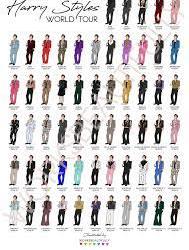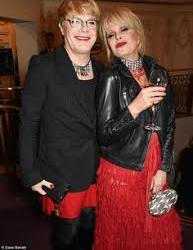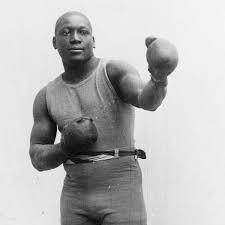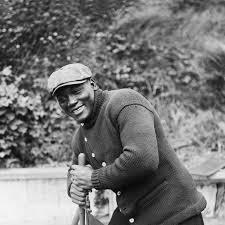Text
Timothy Young (my dad)


So this is my dad sometime in the 80s. My dad is an amazing human being. I think that in his own way and through his work with the non-profit, On The Ground, he has changed the world. My dad is a kind, compassionate, person who always puts others before himself.
He is also a massive David Bowie fan so I am sure that many of his fashion choices in the 80s were inspired by Bowie.
I added this post for fun because these photos of my dad in the 80s are just fantastic.
0 notes
Text
Harry Styles




Harry Styles came to fame in British boyband, One Direction. Capturing the hearts of thousands of young people while in the band, Styles became more and more popular outside of the band as well. While in the band, Harry Styles dressed in clothing that was more stereotypically male. He dressed the way most 18-22 year old boys dress. He wore skinny black jeans and t shirts. His style began to evolve near the end of his time in One Direction and into his solo career.

In 2020, he appeared on the cover of Vogue wearing a dress. For this magazine cover, Styles received a majority positive response. But, he also received a fair amount of backlash as well. Most notably, Candace Owens produced a series of tweets talking about the choice to wear a dress. She wanted to bring back manly men because she believed that “manly men” couldn’t be manly if they were wearing a dress. Candace Owens is a great example of people believing that society will only function when there are two genders and everyone should be in heterosexual relationships. She is also a great example of how women can uphold the patriarchy just as much as men can. An article from MSNBC covers the backlash that Styles received and discusses the hypocrisy within the conservative belief that men can’t and shouldn’t wear dresses. But as this MSNBC article discusses, men have worn dresses before historically.
The first man that this article talks about is Jesus Christ. “According to historians, he wore a thin on-piece- knee-length cloth tunic...was a common undergarment for most men at this time.” (MSNBC) I chose to discuss this portion of the article because it is a great connection to our class but it also almost directly contradicts statements made by Candace Owens and other conservatives over this issue.
Men wearing dresses is not a new concept. It used to be the norm. Norms change all the time and the understanding of gender and sexuality has greatly evolved as well.

Harry Styles has played around with many different looks and styles. When he toured his first album, each night he wore a different and eccentrically styled Gucci suits.
His fashion in the past few years has been experimental and not always considered to be masculine. For this, he has received praise from his fans and backlash from people, like Owens, who feels that men like Styles and others are a threat to our society because they choose to wear clothing not always associated with their gender.

Plank, Liz, and MSNBC Opinion Columnist. "Candace Owens Mocks Harry Styles for Wearing a Dress. Did She Forget about Jesus?" MSNBC. November 17, 2020. Accessed March 09, 2021. https://www.msnbc.com/opinion/candace-owens-mocks-harry-styles-wearing-dress-did-she-forget-n1247961.
0 notes
Text
Eddie Izzard




Eddie Izzard is an actor and comedian who uses female pronouns. Most recently, he was in a movie called. “The High Note” where he portrayed a cisgender man. Izzard has spoken openly about her sexuality and her preferred pronouns. Here is how she is described on her website, “Hailed as the foremost stand up of a generation. Star of the stage and screen. Tireless supporter of charity. Runner. Political campaigner. Fashion icon. Human. Eddie Izzard is all of these things and more.” She really is an amazing human being yet some people can’t get past the fact that she identifies as a woman.
There is a reason why in this project I have said that we will look at and learn the stories of people and not “men”. Izzard does not use male pronouns and does not identify as a man. People that believe in and enforce gender stereotypes would not view Izzard in the way that she truly feels on the inside. They wouldn’t look at Izzard and see a woman. They would look at Izzard and see a man dressed as a woman. Gender norms and stereotypes are still prevalent at this time but no longer harshly enforced. We still see people who strongly believe in gender norms and that there are only two genders when we know that this simply isn’t true.
But, I am arguing that Izzard goes against the gender norms because she ignores them. She is open about who she is and that is a threat to (typically) white, cisgender men. Izzard has received some backlash after announcing that she prefers female pronouns back in December of 2020. She identifies as gender fluid and simply prefers she/her pronouns. “Not everyone was supportive of the comedian’s request, however. Speaking about the discrimination that transgender people often face, Izzard said: “If it’s not affecting someone, then why do you need to lean in and stop other people just trying to create a little space for themselves to be positive.” (Independent) Izzard later said in the interview, “This is not an attacking thing, this is just existing.”
Preskey, Natasha. "Eddie Izzard Tells People 'miffed' about Her Pronouns to 'have a Cup of Tea'." The Independent. February 03, 2021. Accessed March 08, 2021. https://www.independent.co.uk/life-style/eddie-izzard-pronouns-gender-trans-b1797055.html.
"The Early Years." The Early Years | Eddie Izzard. Accessed March 08, 2021. https://eddieizzard.com/en/early-years.
0 notes
Text
David Bowie and Prince





David Bowie was an incredible musician who created a vast catalogue of music and even dabbled in acting. The last picture is Bowie in the movie Labyrinth. When Bowie gained a large amount of fame, he introduced the world to Ziggy Stardust after coming out as gay. Bowie was known for changing up his style and personality throughout his career. He constantly experimented with sound, different personas, and collaborated with the biggest names in the industry like Mick Jagger and John Lennon.
Sexuality-wise, Bowie came out on a couple of different equations. His persona, Ziggy Stardust is gay but Bowie himself came out as bisexual. Then he came out as gay which he later said was a mistake.
Bowie’s greatest breakaway from the gender norm was the way he expressed himself through his music and his fashion choices. In the iconic music video “Blue Jean” he plays a character that wore intense makeup and more feminine. He played with styles that went against, and arguably could still go against the norm. In the video he plays two different characters. One of them, the performer with the drastic makeup and more avant-garde fashion. The other character that he played would have been considered to follow the normal gender characteristics. A man who wore a suit, and no makeup on his face.
Bowie is a great example of Judith Butler’s argument that gender is a performance. All of Bowie’s different personas ignored the typical norms of his gender. Obviously he is a very talented performer. But he didn’t let societies ideas of what a man should look like limit how he expressed himself and who he is.
https://www.youtube.com/watch?v=NZnryZ5rDbs
"David Bowie." Wikipedia. March 06, 2021. Accessed March 07, 2021. https://en.wikipedia.org/wiki/David_Bowie#Sexuality.
"David Bowie." Biography.com. January 03, 2020. Accessed March 07, 2021. https://www.biography.com/musician/david-bowie.



Bowie and Prince were creating around the same times so I bunched them together.
Prince was very similar to Bowie. They both had well documented relationships with women and in that sense they fit into the. “norm” but they played with fashion and sound in their careers. This is where they both strayed from the norm. Their fashion set them apart from what a person in the more traditional sense would have acted and dressed. Of course, this comes with the nature of being performer but not all performers dress androgynously or experiment so much with different fashions and sounds. They were different from performers of their time.
An article from The Guardian talks about Prince and Bowie’s fashion and the impact that it had on the music and fashion industry. “Like David Bowie, Prince toyed with the ideas of the “other”: the feminine, the alien, the faceless. Through costume and artwork, he created the Prince that became iconic: the wistful flaneur with Egyptian-style eyeliner.” (The Guardian). The looks that Prince wore were quite flamboyant and out there. “The sexually open content of the lyrics was mirrored by his look, which riffed on the teddy boy revival but added the specter of the flasher in the local park. On stage, he would augment the look with thigh-high stockings, a fact not appreciated by Rolling Stones fans who booed him off stage when he opened for the band on tour.” (The Guardian). He was risqué and his lyrics were the same. The fact that he was booed off stage by Rolling Stones fans for his look shows that he was not the norm. Even rock and roll fans were unsure about Prince at the time because of his fashion and the lyrics that he wrote.
Bowie and Prince had big impacts on the music and fashion world. This quote from the Guardian article really ties together what I am saying about Prince and Bowie. “Prince brought a new conversation about gender to fashion. He wore high heels and lace gloves, making the world think about how a man or a woman should dress, pushing the boundaries of taste and acceptability. As singer Frank Ocean highlighted in his tribute: “He made me feel comfortable with how I identify sexually simply by his display of freedom from and irreverence for the archer idea of gender conformity.”
"Prince: How His Androgynous Style Influenced Fashion." The Guardian. April 22, 2016. Accessed March 08, 2021. https://www.theguardian.com/fashion/2016/apr/22/prince-how-his-androgynous-style-influenced-fashion.
"Prince." Biography.com. August 17, 2020. Accessed March 07, 2021. https://www.biography.com/musician/prince.
1 note
·
View note
Text
Alan Turing




Alan Turing was a brilliant man who played a major role in WWII on the side of the Allied Forces. He was a part of a code breaking team that worked to decode German ciphers. “During World War II, Turing was a leading participant in wartime code-breaking, particularly that of German ciphers... where he made five major advances in the field of cryptanalysis, including specifying the bombe, and electromechanical device used to help decipher the German Enigma encrypted signals.” (Biography.com) Alan Turing was also a gay man and this led to him being convicted for public indecent. Being a homosexual was illegal in the United Kingdom at this time. He was given the option to be imprisoned or under go chemical castration. He chose the second option. Since he was convicted, he was no longer allowed to continue his cryptography work. “Turing died on June 7, 1954. Following a postmortem exam, it was determined that the cause of death was cyanide poisoning.” (biography.com)
Turing was considered as going against the gender stereotype of the time. He was a gay man and that was not even legal in the United Kingdom. The social norm for a man at this time was a straight man who would have a wife and kids. He would provide for the family and be the head of the household. Turing’s “lifestyle” went against this norm. He was not performing the right gender characteristics of the time. But, he was still this amazing person that played such and important role in World War II. Now, of course, he is recognized for his work as a cryptographer and mathematician. Turing was given a Royal Pardon in 2013. “Three years later, on October 20, 2016, the British government announced “Turing’s Law” to posthumously pardon thousands of gay and bisexual men who were convicted for homosexual acts when it was considered a crime.” (biography.com) And in July of 2019, “the Bank of England announced that Turing would appear on the UK’s new £50 note, along with images of his work.”
I am not arguing here that homosexuality is performance or that sexuality is something that you can choose to perform. My argument for this story is that Alan Turing, arguably a war hero, didn’t fit into the societal ideal of a man. While most war heroes would be seen as the ideal and would have been rewarded for their service, Turing was not given the appropriate recognition until almost 60 years after his conviction and death.
"Alan Turing." Biography.com. July 22, 2020. Accessed March 05, 2021. https://www.biography.com/scientist/alan-turing.
1 note
·
View note
Text
Jack Johnson




We talked about Jack Johnson briefly at the beginning of the term. I was really intrigued by his story and the effect that he had on society. While some would think that being a big strong man would be the ideal man. But, Jack Johnson went against the norm of the ideal man because he was black. When he beat a white man in one of the biggest boxing competitions, he replaced him as the strongest and manliest man. This was completely threatening to white men. They felt that white men should always be the ideal and supreme over all.
John Arthur Johnson (or Jack Johnson) was the first black heavyweight boxing champion. Johnson beat Jim Jeffries (a white man) for the title. This sparked an outrage. Johnson was outside of the manly category because he wasn’t a white man.
Now this example is a little different from some of the other ones. Jack Johnson, arguably, is a very manly man. He’s a heavyweight boxing champion, a strong man. This seems to fit right in with the expectations of what a man is supposed to be. But Johnson, at the time, was not considered to be the ideal man. White men were outraged and felt threatened when Johnson beat Jeffries for the title. White men everywhere felt that Johnson had taken that title from them. In Gail Bederman’s book Manliness & Civilization, she discusses the aftermath of Johnson’s victory over Jeffries in the first chapter. “In most of the incidents, however, rampaging white men attacked black men who were celebrating Johnson’s victory.” (Bederman, 3). And, “Three thousand white men took possession of Eighth Avenue and held against police as they attacked every negro that came into sight.” Bederman also wrote, “Even the United States Congress reacted to the implicit aspersions Johnson’s victory cast on white manhood.” Johnson’s victory felt like a threat to white manhood. They felt that a black man couldn’t be manly enough to claim victory over a white man because they were considered lesser than the white man.
"Jack Johnson." Biography.com. June 05, 2020. Accessed March 03, 2021. https://www.biography.com/athlete/jack-johnson.
Bederman, Gail. Manliness & Civilization a Cultural History of Gender and Race in the United States, 1880 - 1917. Chicago, Ill.: Univ. of Chicago Pr., 1995.
0 notes
Text
Deborah Sampson

This is Deborah Sampson. Deborah Sampson is a really amazing woman. She lived during the Revolutionary War and dressed as a man to fight for her country. I included her in this project because I wanted to give an example of a woman who broke the gender rules of her time. She majorly broke the gender rules of her decade and generation. Deborah Sampson successfully dressed as a man and fought in the war for two years. She was only discovered when she was severely injured in a battle.
Sampson transformed herself into Robert Shurtleff and she joined the Fourth Massachusetts Regiment. Sampson wasn’t given an easy job in the military. “She was given the dangerous task of scouting neutral territory to assess the British buildup of men and materiel in Manhattan, which General George Washington contemplated attacking.” She was successful in her performance for about two years. Even when she was severely injured, she treated the injuries herself so that her secret wouldn’t be discovered. Her true sex was discovered when she got sick and was taken to a hospital. Sampson received an honorable discharge on October 23. 1783. The rest of her life was pretty typical for a farmer’s wife but she did a lecture tour to tell the rest of the country about her experience. She was the first woman to do so.
I added Sampson to this project because I thought that it was important to my argument. Her story really exemplifies the argument that gender is a performance and is performed by people daily. Sampson, as far as we know, did not truly identify as a man but successfully performed as one for a few years. The United States even granted her husband the right to her pension after she died. This story, as well as the other stories, show life is a performance but it doesn’t mean that you have to perform within the gender guidelines that society forces on people of different genders.
Obviously, Deborah Sampson did not fit into the gender ideals of her gender as well. She was a woman and identified as a woman. During wartime, she would have been expected to stay home and run the home while the men were on the battle field.
I have always been amazed by this woman. Truly, I almost wrote a project about her in the fourth grade when we did the wax museum project. Unfortunately, three other girls wanted to do write about her as well and my teacher made me choose someone else.
Information about Deborah Sampson from:
Michals, Debra. "Deborah Sampson." National Women's History Museum. 2015. www.womenshistory.org/education-resources/biographies/deborah-sampson.
0 notes
Text
Defining my Terms
I am talking about gender and gender norms. I do not believe that there are simply two genders and I know that gender norms are constructed by society. When I talk about gender norms and an understanding of gender, I am basing it off of the knowledge that there are some people (way more conservative than me) who do not believe in more than the two genders and believe that there is a certain way that people should act based on the “norm” that is decided on by society.
For example, people in the 1950s believed wholeheartedly that being homosexual was against human nature. It is not necessarily difficult to breakaway from the gender norm because they can be strict and straightforward. A man in the 1950s was meant to have a stable job, a wife, children, and he was the breadwinner. That was the norm in the 1950s.
I also talk a lot about fashion on this page. Many of the people discussed here use fashion as a way to express themselves. It is their way to push past the boundaries set upon people by society. Fashion is a big part of this project because one of the best and most effective ways to express yourself is through what you put on your body.
0 notes
Text
Introductory Post







For my final project, I set out to research people that push against traditional gender norms and also had a major impact on society. From the Revolutionary War period up until today, I will discuss eight different people and how they pushed against the gender norms that are forced upon their bodies by society. This is going to be a project that talks about gender, gender norms, and breaking those stereotypes. I will talk about eight people and how they have impacted society. Some of them are international celebrities and some of them had more of a local effect on society but all left a mark. I chose Tumblr as my platform because in the past it has been a safe space for people to express themselves in ways that reflect exactly how they feel. It allows them to find their community through following specific tags and following profiles. They cultivate these positive communities of inclusivity where you can be yourself without fear of judgement and exclusion. It can also be used as a resource for people outside of these communities to better understand the inter-workings of that community. I can’t imagine doing a project like this on any other platform because no other platform is really built this way. This platform is a place where all of these people would be accepted for exactly who they are. I chose this platform to tell these stories and this is a place where stories can be told and support can be found for people of many different communities. I have found this in my own experience with this platform and I know many other people who have had similar experiences.
The only place where I see drawbacks of this platform are lack of ability to really edit the look of the page and that sometimes it can be hard to reach many people because it is not used as much as some social media platforms. The home page of the blog doesn’t give many options for the way that the page looks to viewers. I would have like to have more options than background color, profile picture, and cover photo. There isn’t much I can do about the second drawback either. But I will add tags to each of my posts as you will see at the bottom of this post. They will have the names of the person as well as #masculinity and #gender because I think that will draw in a good group of people to this page.
Judith Butler says that gender is a performance. This is exactly what I am arguing as well. Butler wrote, “Hence, as a strategy of survival, gender is a performance with clearly punitive consequences.” and later, “When this conception of social performance is applied to gender, it is clear that although there are individual bodies that enact these significations by becoming stylized into gendered modes, this “action” is immediately public as well.” (pg 526) These amazing people that I will be discussing on this page all show that gender is simply a performance and that you can perform it in any way that you want to which is a different take on Butler’s idea of gender as a performance. These people show that you do not need to perform the gender that is pushed on you from birth. You can play with the idea of gender and create your own performance. In this project you will also see people hurt because of who they are. I am specifically talking about Alan Turing. I am not saying that homosexuality is a performance but I am saying that he was outside of the boundaries of what society expected a man to be. This project is a place to tell a part of the stories of these people. It will talk about the positive impact that some of these people have had on society and it will also discuss the more difficult parts of these stories. Gender is simply an idea that was created by society which was built by white men. These people that I talk about on this page push against these age old ideas of what a “man” should look like and act like.
This is a project about people. Some of them identify as male and some do not. I will be talking about how these people do not necessarily fit into the societal ideal and how this is an important part of their story. Most of this project focuses on the clothing that these people use to express themselves.
Judith Butler, “Performative Acts and Gender Constitution: An Essay in Phenomenology and Feminist Theory.” Theatre Journal 40, no. 4 (1988): 519–31.
1 note
·
View note